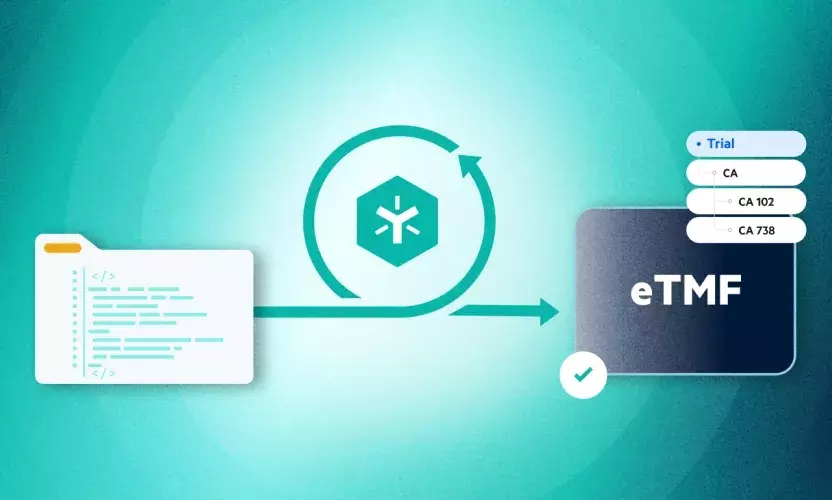
9 Migration Considerations to Help Rein in Content Sprawl
The past year and a half has posed unprecedented challenges to society, at every level. For companies adjusting to a more distributed workforce, with newly remote workers and no central place of business to anchor their teams, the corresponding flood of unmanaged content and shadow IT has been a serious test of their organizational fortitude.
For these companies, business-critical content can go unchecked, dispersed between the cloud and corporate hard drives—a scenario known as content sprawl. At Egnyte, we see customers large and small grapple with these challenges, and we’ve worked with them to solve some of the most complex content management issues businesses face today.
Since it’s at the heart of what we do, one of the most common challenges we discuss with customers is the desire to migrate content to a new data management and collaboration platform. But a successful migration requires forethought and solid planning in order to avoid any further content sprawl.
Migration is Not a Four-Letter Word
Many IT professionals dread migrations. The mere mention of it conjures up images of painful outages, endless support tickets, unhappy customers, lost data, malfunctioning databases, budget impacts—you name it. But with pain comes the opportunity to grow. Every issue solved is a lesson learned. Every new use case or complex configuration offers a chance to develop mitigation processes and document best practices. Here we’ll try to unpack some of the layers and best practices for planning a successful migration.
An organization needs to take many things into account with any data migration. And while the pandemic may have created greater urgency around wrangling your data, you still need a methodical approach to planning your migration. Here are the top nine considerations you’ll want to evaluate.
- What is the data source and where is it physically located? This will determine what tools are available to migrate your data.
- What is the network configuration? What about anti-virus, firewall settings, and security constraints? These factors will impact how easily you can move data, and whether you need to involve your security team in the migration.
- What’s the payload size? How many gigabytes or terabytes (or even petabytes!) of data need to move, and what’s the total number of objects (files and folders combined)? Frequently we find that the number of objects is a much greater concern than the actual size of the data. Every object has the same amount of metadata associated with it, regardless of how large it is.
- Should you break up a migration into smaller jobs? What’s the optimal breakdown? In a perfect world, you’d want to just lift and shift an entire directory at a time. Wouldn’t that be nice? Sigh. Realistically, you’ll probably need to split the job up into manageable batches.
- Does your migration tool enable chunk uploads for larger files? The benefit here is twofold. You can migrate chunks in parallel, which results in faster transfers of large files. And if there’s an error, you can just upload the impacted chunk rather than being forced to remigrate the entire file.
- Do you need to migrate permissions? Not all tools enable this, so it’s important to ask the question on the front end.
- Are there budgetary limitations? Can you afford to bring in outside help to handle the heavy lifting? Some migration tools are costly to use but greatly simplify the process. Others may be free or low cost but require greater expertise.
- How skilled is the team driving the migration? Have they successfully managed a large data migration previously? This might impact your decision to bring in some seasoned professionals to assist. Of course, that comes at a cost.
- What are the timing constraints? Is there a firm date for completion? What are the ramifications of missing this data? Ideally you want to allow plenty of time to seed the data, run multiple tests, and then plan a cutover when your users stop using the original data source entirely, before allowing them to begin using the new data repository.
All of this is critical to migrating large data sets. By taking a well-planned, methodical approach, you can mitigate or avoid some of the pain that could arise when migrating your data to a new platform.
Be a Good Shepherd of Your Content Lifecycle
A migration isn’t just about getting your data from its point of origin onto a new data management system; it also plays an integral part of a comprehensive content lifecycle management strategy. Data migrations are commonly required to support merger and acquisition activities, business expansion, phased operational changes, audit compliance and more. Regardless of where you are with your content governance strategy, you need tools that help you solve business problems and gain control over your content.
Many employers continue to allow local team members to work from home. Plus, we’re seeing more highly distributed workforces across multiple time zones. And there’s even greater pressure on data management systems due to security concerns raised by the increased levels of corporate espionage and cybercrime.
Our team has partnered with thousands of customers to help them leverage our tools for data migration and content lifecycle management. We responded to the inevitable shift this past year toward content management and collaboration systems designed to support remote workforces. As we’ve helped customers navigate this new business landscape, we’ve also continued to gather feedback and document real-life experiences and unique use cases to improve our products and build out our feature roadmap.






